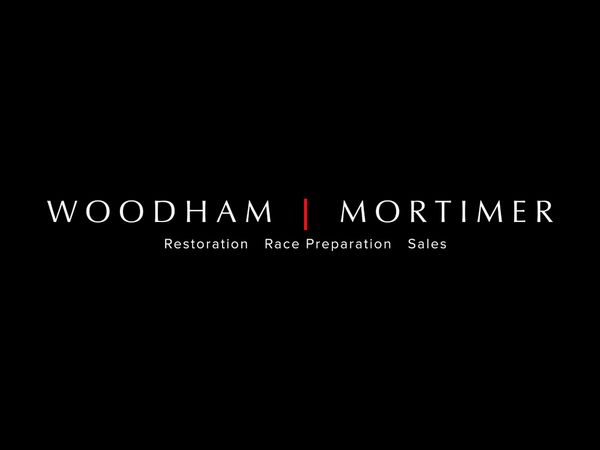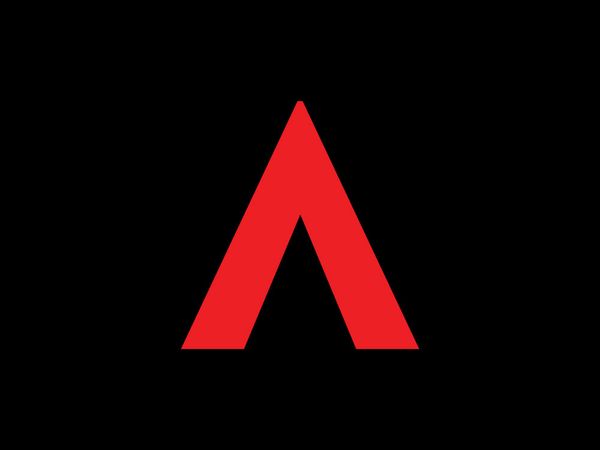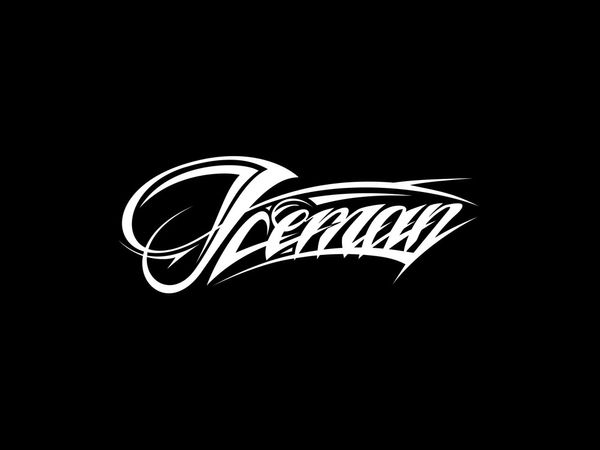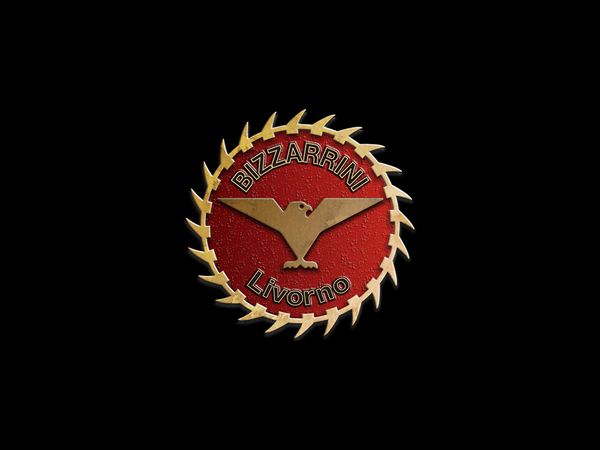When Haas F1 Team debuted in the 2016 FIA Formula One World Championship to become the first American Formula One team in 30 years, it did so with help from two Italian partners – Scuderia Ferrari and Dallara. It’s a collaboration that continues as Formula One comes into the final leg of its European stretch with the Italian Grand Prix Sunday at Autodromo Nazionale Monza.
Maranello-based Ferrari provides Haas F1 Team with its power unit, gearbox and overall technical support, and famed racecar builder Dallara has Haas F1 Team’s design staff embedded in its Parma headquarters.
This unique relationship allowed Haas F1 Team to hit the ground running with drivers Romain Grosjean and Esteban Gutiérrez. The massive task of creating a Formula One team from scratch was made slightly less daunting by the more than 130 collective years of motorsports experience brought by Ferrari and Dallara.
Proof of the program’s success can be found in Haas F1 Team’s eighth-place standing in the constructor ranks, where after 13 races it is 22 points ahead of ninth-place Renault and only 17 points behind seventh-place Toro Rosso. The 28 points Haas F1 Team has earned so far this season are the most of any new team in this millennium. When Jaguar debuted in 2000 and when Toyota came on the scene in 2002, each entity managed only two point-paying finishes in their entire first seasons for a combined total of six points.
Points at Monza and in the seven races that follow are coveted by Haas F1 Team. The distance between it and Toro Rosso is surmountable if each grand prix is executed to the team’s fullest potential.
The speed is there, as Grosjean and Gutiérrez have shown. In eight straight grands prix the duo has made it to the second round of qualifying (Q2). The third and final round of qualifying (Q3) beckons as the two drivers have five 11th-place qualifying efforts between them – three by Grosjean and two by Gutiérrez. They’ve come tantalizingly close to breaking into Q3 for a top-10 qualifying effort, and the 5.793-kilometer (3.6-mile), 11-turn temple of speed that is Monza could very well be a breakthrough venue.
Grosjean has made four Formula One starts at Monza with a best finish of eighth in 2013. His best qualifying effort is also eighth, earned last year. Gutiérrez has made two Formula One starts at Monza, and his first Formula One drive at the track in 2013 was perhaps his most memorable. Gutiérrez, in a Ferrari-powered Sauber, set the fastest speed in the final year of the V-8 era by hitting 341.1 kph (211.950 mph).
Gutiérrez’s entire Formula One career has been connected to Ferrari. His two years with Sauber in 2013-2014 came with Ferrari power, and he joined Scuderia Ferrari in 2015 as the team’s third driver where he helped develop the racecar for four-time Formula One champion Sebastian Vettel and 2007 Formula One champion Kimi Räikkönen. By signing with Haas F1 Team for 2016, Gutiérrez retained his ties to the Prancing Horse.
With Ferrari providing the horsepower for Haas F1 Team, the outfit feels well-prepared for Formula One’s fastest track. The circuit’s long straights combined with teams’ low-drag configurations mean that speeds approach 360 kph (224 mph). Cornering speeds are relatively low and with the high-speed straights, tire wear is minimal, especially in comparison to last Sunday’s Belgian Grand Prix at Circuit de Spa-Francorchamps where tire degradation was extremely high. But while tire wear will be lower than it was at Spa, the chance of wheelspin while under acceleration is higher because of the low-downforce package Monza favors.
A favorite among Formula One fans and, especially the Tifosi, Monza provides an electric atmosphere that gives a charge to Haas F1 Team and its Italian partners.
Guenther Steiner:The Italian Grand Prix is a quasi home race for Haas F1 Team as its technical partner, Ferrari, and its collaborator on chassis development, Dallara, are both based in Italy. Knowing the Haas VF-16’s Italian ties, how important is it to have a strong showing at Monza?
“With Dallara’s headquarters only an hour drive from Monza, I’m sure that a lot of their people will be there. It’s always good to be there because of the passion people have for the racecars. The history of Monza and the passion of the Tifosi give the Italian Grand Prix a great atmosphere, and with it being close to both of our technical partners, we want to do our best.”
How has the technical partnership with Ferrari been and how has it evolved as Haas F1 Team went from designing a car to building a car to racing a car?
“The partnership has been great and, without them, we wouldn’t be where we are. I am sure about that. It is evolving every day and the people at Ferrari understand what we are doing. We are all here to go racing and I know that they enjoy competition. Over time, the relationship keeps getting stronger and, of course, we enjoy working with them.”
Explain Dallara’s role with Haas F1 Team and its prior history in Formula One.
“Dallara made their own car a long time ago and they have been involved with many projects. They enjoy being in Formula One and are doing a great job with their contribution to Haas F1 Team. Their people are passionate about it and love it. The partnership started off well and we are working to improve it so we can learn and be even better next year. They have definitely contributed a lot and help us on our program.”
What made Dallara the right partner for Haas F1 Team?
“They give us their experience. They have the infrastructure and knowledge of the racecars and, for us, it was the best choice to partner with them. The combination of Haas F1 Team and Dallara is a good match.”
This is Haas F1 Team’s first year and each race weekend is a learning experience. Is the same true for Dallara?
“I think it’s less based on a race weekend and more on a yearly basis when a new car is built. Altogether we learn a lot on making and using the car. They aren’t just an outside company. They are part of our team. I absolutely think it is a learning experience for them, too. It is for everyone involved.”
While the 2017 car will be drastically different from the 2016 car, what’s been learned from the partnerships with Ferrari and Dallara that can be applied to development of the 2017 car?
“Everything you do you learn and want to be better at. We are looking at how we have done during the 2016 year, which has been a pretty good job, but there is always room for improvement. To move forward in the classifications and ranks we will need to do better, and it won’t happen on its own. Everything will need to be more efficient and will need to step up in order to be better next year. That’s what we are doing with Ferrari and Dallara – just trying to improve so we can make the program better.”
How satisfying has it been to see a new idea and a very different philosophy of how to go Formula One racing not just come to fruition, but be successful by scoring points and challenging some of the more established teams?
“The philosophy of what Gene (Haas) set out – that we don’t need to reinvent the wheel, but we need to find a way to do it more efficiently because we knew doing the same as the other teams wouldn’t be enough. There is satisfaction in seeing the plan not just come together, but work and work well. We should be happy with what we’ve achieved.”
Would Haas F1 Team’s success have been possible without the collaborations with Ferrari and Dallara?
“No, not really. We can never really prove it, but I think that it definitely would have been more difficult and a lot less successful. I would think that without Ferrari and Dallara, we wouldn’t be where we are right now.”
Haas F1 Team’s setup is unique – headquarters in the United States, logistical base in England and car design in Italy. How have you been able to manage it and ensure that three facilities in three different time zones work together?
“Good people! You need to have people that you can trust, and that is the only way to do it. It does include a lot of traveling from my side, but we don’t know any different, which makes it a bit easier for us. We just use technology to talk and it seems to be working. I suppose we could’ve done it differently, but I think that part of our success is that we have the right people in the right places. As of now, it seems to be working, even if it is a lot of work compared to everything being in one place. As long as it continues to work, we will continue to do it this way.”
Do you think other entities outside of Formula One are looking at Haas F1 Team’s model as a way to potentially break into the sport?
“I hope so. I mean, I always wish for competition if they see it can work. I think there is still a license out there that somebody can get. As far as other existing teams changing, I don’t really see that happening because it would be more difficult for them. A new team, though, could be possible because we have shown that there is more than one way to have a Formula One team.”
Could what Haas F1 Team has accomplished be emulated?
“I think others could copy it, but they’ll need to find their own path to make it work for them. There are a few strong teams out there that I think could provide what we get from Ferrari.”
Ferrari’s hospitality unit is always packed during the Italian Grand Prix. How busy will our hospitality unit be?
“That is difficult to say. If you are up toward the front of the paddock, the more people that want to be associated with you. But I think with us being associated with two Italian companies, we will have some friends who will come by and have a coffee.”
Romain Grosjean:
Ferrari and Dallara are two Italian companies that are technical partners of Haas F1 Team. How has their collective insight helped make Haas F1 Team so competitive in its first year in Formula One?
“It was vital. The whole idea of creating Haas F1 Team was based on the partnership with Ferrari and Dallara. We worked to have good cars and to perform as early as the first test. To do that, we had to get that partnership to work, which it did. I’m looking forward to being in Italy knowing the strength of those companies in our on-track efforts.”
Monza is the fastest track Formula One visits. What allows you to reach such high speeds at Monza?
“It’s the characteristics of the track, primarily a long straight line with a chicane followed by another long straight line. Everyone goes for low downforce levels. That’s where we go fast in a straight line. It’s a great track – a temple of speed. There’s always a great atmosphere around the circuit. I’m very much looking forward to racing there again.”
Where are the overtaking opportunities at Monza?
“More or less everywhere.”
Is overtaking at Monza a bit like a drag race where it’s about who can get on the power the fastest and most effectively?
“It’s not as straightforward as a drag race. You still lose downforce when you follow another car out of the low-speed corners. It’s one of those races where you can have a lot of overtaking, a lot of action. It’s always interesting to see how it plays out with the big slipstreams.”
Monza is a track with a lot of history and home to some of Formula One’s most passionate fans. Can you describe the atmosphere there?
“The atmosphere is crazy in Monza. The Tifosi, the fans – they’re just great. The track is in the middle of a park. It’s like nowhere else. There are so many people coming and watching, cheering for the drivers and, of course, for Ferrari. The atmosphere is electric. I love it.”
Have you had the opportunity to walk around the old portions of Monza, specifically the oval? If so, what ran through your mind when you saw the banking and realized cars in the late 1950s and early 1960s actually raced wheel-to-wheel on that track?
“It was crazy! You can barely stand up at the top of the oval. We still go underneath part of it at the Ascari chicane. It was definitely a different time, a different era of safety measures. I’m sure it was good fun, though.”
Would you have liked to have competed in that era just to see what it was like, or do you prefer to compete with the latest and greatest technology available?
“I’d compete anytime. I’ve always loved Formula One racing, no matter the era.”
Do you have any milestones or moments from your junior career that you enjoyed at Monza?
“My first race in Formula Renault 2.0 in 2004 – the Eurocup Series – was at Monza, and I was on the front row after qualifying. That was quite good. Certainly a happy memory.”
What is your favorite part of Monza?
“I like the two Lesmos turns, the ‘Curva di Lesmos’.”
Describe a lap around Monza.
“You cross the start-finish line going into the first chicane with big braking, dropping down to second gear. Then you’ve got important acceleration going into the second chicane, which is a bit faster, a bit more curb usage on the exit. You then try and carry as much speed through the two Lesmos turns. Then you go under the old oval and into the Ascari chicane. There’s big braking here, with a bump. It’s always tricky to get the car there. Then you really want to go early on power to get to the Parabolica. There’s another very long straight line, with very late braking to the Parabolica. Again, tricky throttle application heading toward the start-finish line to set your lap.”
Esteban Gutierrez:
Ferrari and Dallara are two Italian companies that are technical partners of Haas F1 Team. How has their collective insight helped make Haas F1 Team so competitive in its first year in Formula One?
“I think it’s been really important to acquire the experience from Ferrari and Dallara. We gained a lot of knowledge, and from that point of view, it’s been a crucial part of our success.”
You’ve spent a lot of time with Ferrari, first with Ferrari power during your time at Sauber in 2013-2014 and then as the third driver with Scuderia Ferrari in 2015 before joining Haas F1 Team this year, where we also use Ferrari power. How helpful has it been to have such a deep understanding of Ferrari, its people and its methodology?
“It’s been really important. Ferrari works in a very particular way, which I find very nice and interesting, but you need to really understand the background in order to work efficiently. For example, the change of engines from one year to another was a big, big difference, and to have been through that transition helped me come here with a lot of experience.”
Prior to the summer shutdown, you were able to climb back into a Ferrari and test the 2017 Pirelli tires while driving a 2015-era car. How did it go and what kind of insight can you provide regarding the wider tires that will be used next year in Formula One?
“The tires are wider and you have more mechanical grip, which is what we are aiming for. We will have more downforce and it was great to get a preview of that in order to prepare myself, and also for the team to get a good idea, and for Pirelli as well to develop the right tires we need for next season.”
You set the fastest speed at Monza in the final year of the V-8 era (2013) when you wheeled your Ferrari-powered Sauber to a top speed of 341.1 kph (211.950 mph). What was it like to extract that much speed from the car over the course of the track’s 5.793-kilometer (3.6-mile) layout?
“It was great! It was crazy because I remember exactly that moment when I was in the race with the DRS on, maximum speed, and I got a lot of speed down the straight into braking and it was quite an impressive feeling.”
Monza is the fastest track Formula One visits. What allows you to reach such high speeds at Monza?
“It’s interesting because you have a lot of high-speed sections, mainly straight-line sections with very low downforce, and this is directly affecting the braking of the slow-speed corners. When you have a long period of time when you’re braking, obviously the downforce is important, but the fact that you get very low downforce on this track, you need to cope with the car in different ways and you need to adapt the setup for that.”
Where are the overtaking opportunities at Monza?
“Basically, everywhere. You have turn one and you have turn four, as well as before the Parabolica. It’s a track that provides a lot of overtaking.”
Is overtaking at Monza a bit like a drag race where it’s about who can get on the power the fastest and most effectively?
“Yes, definitely.”
Monza is a track with a lot of history and home to some of Formula One’s most passionate fans. Can you describe the atmosphere there?
“It’s one of the classics. The people, the atmosphere, the Italians, Ferrari fans, and we’re using Ferrari engines, so it’s great to come there and enjoy nice support from the Italians, especially for me being part of Ferrari last year directly as a third driver put me very close to Italy.”
Have you had the opportunity to walk around the old portions of Monza, specifically the oval? If so, what ran through your mind when you saw the banking and realized cars in the late 1950s and early 1960s actually raced wheel-to-wheel on that track?
“Yes I did, and I wish that we could race that corner now. It would be fantastic. It’s incredible how steep it is, and you can only imagine in your mind how it was in those times, how crazy it was. It’s great to think about it because it’s the spirit of our sport.”
Would you have liked to have competed in that era just to see what it was like, or do you prefer to compete with the latest and greatest technology available?
“It’s a tricky question, but I like that classic era. Everything is relative, because in that era the technology was innovative at that moment, because you always push the limits of innovation. It would be nice to have a try to see how it would be, because I know how it is today, so obviously you want to get what you don’t have.”
Do you have any milestones or moments from your junior career that you enjoyed at Monza?
“I won a few championships there – two championships actually, Formula BMW and GP3. I remember exactly how it was. It was actually with a qualifying lap because it was enough to get one point from getting the pole position and that was enough for me to win the championship, so it was a very special moment. It comes always from Monza – a special place for me to get there and get that feeling.”
What is your favorite part of Monza?
“My favorite part of Monza is probably the Ascari corner. It’s a triple chicane, very fast turning in, very late braking. It’s actually one of my favorite corners of the calendar.”
Describe a lap around Monza.
“You come down to the main straight to the first Variante, a very slow-speed chicane with big braking with quite a lot of low downforce, so the car has to be set up mechanically pretty well, similar for the second Variante. It’s important to get the right line because on exit, if you miss a little bit of the first apex, you are done for the rest of the corner. So, it’s important to be very precise. The two Lesmo (corners at Curva di Lesmos) have a little bit of banking. You’re holding a lot of speed in and getting the maximum grip on the apex. Then you come down to Ascari, which is one of my favorite corners – triple chicane, braking very late, turning in very delicately because by braking late you basically unsettle the car completely. You need to cope with it, using all the curb available into the first part and getting the right line through to turn nine in order to be flat at turn 10, which then brings up the speed through that straight line before the famous Parabolica. It’s a high-speed corner and very long. You throw a lot of speed into that corner.”
Autodromo Nazionale Monza
- Total number of race laps: 53
- Complete race distance: 306.720 kilometers (190.587 miles)
- Pit lane speed limit: 80 kph (50 mph)
- This 5.793-kilometer (3.6-mile), 11-turn circuit has hosted Formula One since 1950, with last year’s Italian Grand Prix serving as the venue’s 65th grand prix.
- Rubens Barrichello holds the race lap record at Monza (1:21.046), set in 2004 with Scuderia Ferrari.
- Juan Pablo Montoya holds the qualifying lap record at Monza (1:20.264), set in 2004 with Williams during Q1. At 259.827 kph (161.449 mph), it is the fastest qualifying lap in Formula One history. But, a 1:19.525 lap set by Montoya in practice that year at Monza is widely regarded as the fastest Formula One lap of all time, as his average speed was 262.242 kph (162.950 mph).
- Sixty-five of the 66 Italian Grands Prix have been held at Monza, with the lone outlier being Imola in 1980 when Monza underwent a refurbishment. Most races at Monza have run on a variation of the road course used today, but the 1955, 1956, 1960 and 1961 races were run on the combined circuit that linked the road course with the facility’s 4.250 kilometer (2.641-mile) high-speed oval. With massively high speeds and concern over driver and spectator safety, use of the oval was discontinued for competitive purposes following the 1961 Italian Grand Prix. The oval still exists, however, with rusting Armco barrier barely holding back nature’s grasp on the now dormant portion of the racetrack. The layout currently used by Formula One produces the year’s fastest laps, as the track’s design of long straights and high-speed corners makes Monza the ultimate high-speed circuit.
- DYK? Peter Gethin’s victory over Ronnie Peterson in the 1971 Italian Grand Prix at Monza was .01 of a second, which contends as the narrowest winning margin in Formula One history with Rubens Barrichello’s .011 of a second margin of victory over Michael Schumacher in the 2002 United States Grand Prix at Indianapolis. The change from two to three decimal places in timing technology makes it impossible to know which win was closer.
- During the course of the Italian Grand Prix, lows will range from 17-18 degrees Celsius (63-65 degrees Fahrenheit) to highs of 27-28 degrees Celsius (80-83 degrees Fahrenheit). Relative humidity ranges from 49 percent (comfortable) to 94 percent (very humid), with a dew point varying from 8 degrees Celsius/47 degrees Fahrenheit (dry) to 17 degrees Celsius/62 degrees Fahrenheit (mildly humid). The dew point is rarely below 2 degrees Celsius/36 degrees Fahrenheit (dry) or above 21 degrees Celsius/69 degrees Fahrenheit (muggy). Typical wind speeds vary from 0-11 kph/0-7 mph (calm to light breeze), rarely exceeding 21 kph/13 mph (moderate breeze).
- Pirelli is bringing three tire compounds to Monza:
- P Zero White medium – less grip, less wear (used for long-race stints)
- Theoretically, this is the most balanced of Pirelli’s Formula One tires, with an ideal compromise between performance and durability. It is an extremely versatile tire, but works best on circuits with high speeds, high temperatures and high energy loadings. It is a high working-range compound.
- P Zero Yellow soft – more grip, medium wear (used for shorter-race stints and initial portion of qualifying)
- This is one of the most frequently used tires in Pirelli’s range, as it strikes a balance between performance and durability, with the accent on performance. It is still geared toward speed rather than long distances, but it remains capable of providing teams with a competitive advantage at the beginning of the race where cars are carrying a full fuel load and at the end of the race where the fuel load is much lighter and the race effectively becomes a sprint. It is a high working-range compound.
- P Zero Red supersoft – highest amount of grip, highest amount of wear (used for qualifying and select race situations)
- This is the second softest tire in Pirelli’s range, and it is ideal for tight and twisting circuits, especially in cold weather when maximum grip is needed. The supersofts warm up rapidly, which has made it a stalwart choice for qualifying. But with increased grip comes increased degradation. It is a low working-range compound.
- P Zero White medium – less grip, less wear (used for long-race stints)
- Two of the three available compounds must be used during the race. Teams are able to decide when they want to run which compound, adding an element of strategy to the race. A driver can also use all three sets of Pirelli tires in the race, if they so desire. (If there are wet track conditions, the Cinturato Blue full wet tire and the Cinturato Green intermediate tire will be made available.)
- Pirelli provides each driver 13 sets of dry tires for the race weekend. Of those 13 sets, drivers and their teams can choose the specifications of 10 of those sets from the three compounds Pirelli selected. The remaining three sets are defined by Pirelli – two mandatory tire specifications for the race (one set of P Zero White mediums and one set of P Zero Yellow softs) and one mandatory specification for Q3 (one set of P Zero Red supersofts). Haas F1 Team’s drivers have selected the following amounts:
- Grosjean:one set of P Zero White mediums, three sets of P Zero Yellow softs and nine sets of P Zero Red supersofts
- Gutiérrez:two sets of P Zero White mediums, two sets of P Zero Yellow softs and nine sets of P Zero Red supersofts



























